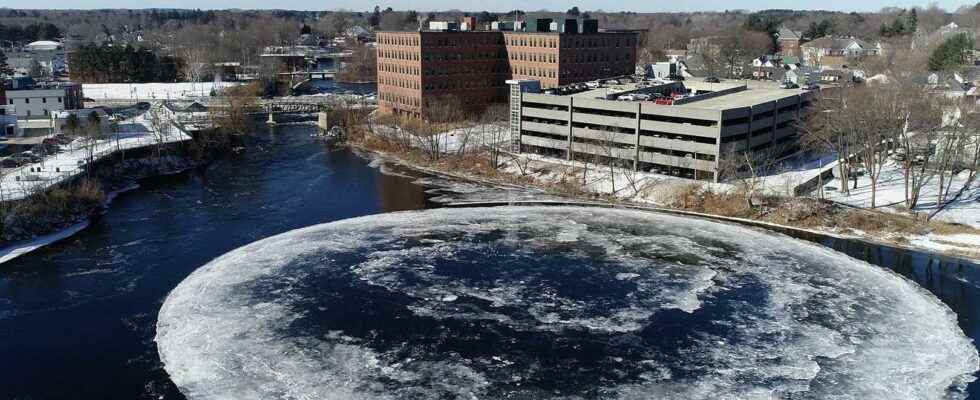You will also be interested
[EN VIDÉO] The melting of the ice is accelerating All over the world, ice is melting at an increasing rate. Very precise satellite data now allow researchers to assess the volume of ice lost over the years. Between 1995 and 2017, some 28 trillion tons — or 28×1015 tons — of ice were lost across the planet. © CPOM
Contrary to what one might think at first glance, this is not a construction human, and even less of the landing site of an extraterrestrial vessel: these discs of ice, with the perfect circular shape, are formed without any external intervention, except that of the weather report.
From 10 to 90 meters in diameter
The most impressive of all has been filmed and observed several times in Maine in the United States: in 2019, 2020, then January 2022, a disk about 90 meters in diameter attracted all the curious in the town of Westbrook. Each time, this disk resisted a few days, spinning on its own axis, before stopping spinning, then disappearing in the space of a few hours with the return of warmer weather.
Because, to obtain such training in movement, a clever meteorological cocktail of temperature, wind and current, is necessary. Ice discs form in the rivers and lakes of the regions polar (northern United States, Canada, Russia…) in the middle of winter. Apart from the cold, their formation requires current: the ice of the water that has previously frozen breaks, sticks together and bumps into the banks of the river, the meanders.
If the phenomenon occurs in a lake, there is no natural current so a strong wind is necessary. The ideal water temperature would be around 4°C. In a river, the edges are always colder than the flowing current, gentler. This slightly warmer current melts the edges of this pile of ice stuck in the meanders, then spins it. A circle of ice is then trapped on the edge of the river, which has no choice but to turn on itself.
Most of the ice discs observed in rivers and lakes over the past decade have been 10 to 30 meters in diameter, and the one in Maine, at 90 meters, stands as the record to date.
The temperature contrast spins the disc
The larger this disk, the slower it spins. But the rotation speed of the disk also depends on the gradient temperature: the greater the difference between the temperature of the stream and that of the edges, the faster the disk will spin. Why ? Because if the water from the stream is much softer, it melts the edges of the disk faster. I’cold water is indeed denser than hot water, which causes the ice to flow when it melts. As it sinks, this melted ice creates a whirlpool that causes the disk to spin. This phenomenon can also be experienced at home, in a sink : a mini disc of ice placed in a sink filled with softer water will cause a small vortex which will spin the disk.
Westbrook’s gigantic ice disc in motion. © George Beaulieu
Support your independent scientific media: discover our subscription formulas!
4 good reasons to subscribe to Futura on Patreon:
- A site without any advertising from 3.29 euros per month.
- It is without commitment.
- Access to priority content, in preview, just for you.
- You support our business in the best possible way. A real motivation for us!
Interested in what you just read?
